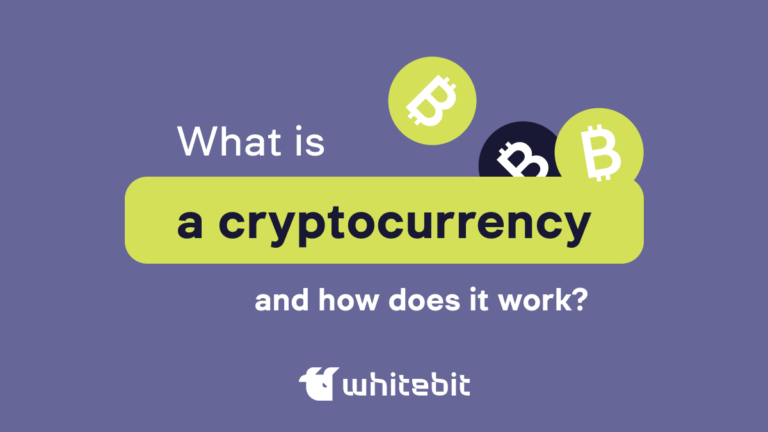What is Proof of Work (PoW) in Crypto?

Content
All cryptocurrencies work on consensus mechanisms, and one of the most famous is PoW—Proof of Work. Let’s examine what is a PoW, how it differs from other algorithms, and how it affects the decentralization and security of blockchain technology.
Who Invented PoW?
Proof of Work is a blockchain consensus mechanism in which participants (miners) solve complex mathematical problems to validate transactions and add blocks to the network.
Proof of Work was invented in 1993 by scientists Cynthia Dwork and Moni Naor to protect against spam and other abuses in computer systems. It was originally proposed to prevent attacks on network resources, such as floods of e-mail requests that could overload servers. The idea was that the sender had to perform a computationally complex task before sending the message, making mass spamming costly and time-consuming.
In 2008, Satoshi Nakamoto adapted the (PoW) Proof of Work concept for the first cryptocurrency, Bitcoin. Nakamoto used PoW to solve the double spending problem and provide decentralized consensus in the blockchain. In the context of Bitcoin, Proof of Work algorithm became a mechanism for validating transactions and creating new blocks, providing security and protecting the network from attackers. Let’s take a look at how it works.
How Does Proof of Work work?
The main purpose of proof of work consensus is for network participants (miners) to perform complex computations to solve a cryptographic problem. These tasks require significant computing power, and miners compete with each other to be the first to find a solution.
Proof of Work Mining
When users send cryptocurrency, their transactions are combined into a block. This block needs to be added to the blockchain, but before doing so, it must be verified. Miners start competing for the right to add a new block. To do this, they must find a unique value (hash) that meets certain conditions (e.g., starts with a certain number of zeros). This is achieved through numerous attempts, called “hashing.” The task’s difficulty level is regulated by the network so that mining blocks takes a certain amount of time (for example, in the Bitcoin network, it is about 10 minutes). In a PoW system, each node not only stores a copy of the blockchain but also participates in verifying new blocks, ensuring the integrity and security of the network—the more miners involved in the network, the more complex the tasks. The first miner that finds a solution announces it to the network. Other nodes verify its correctness. If the solution is correct, the block is added to the blockchain, and the miner is rewarded.
PoW Mining Reward
Miners receive two types of rewards:
- New cryptocurrency: For every block found, the miner is rewarded with a new cryptocurrency (for example, in Bitcoin, this is called a “block reward”). This is the only way new coins are put into circulation. The size of the reward decreases over time (e.g., bitcoin has a halving every four years, when the reward is halved).
- Transaction fees: In addition to the new cryptocurrency, miners also receive commissions from users, which include a small fee for processing their transactions. As the network grows and the reward per block decreases, commissions become a larger part of the miners’ income.
What does the complexity of calculating a new block affect?
- Number of miners in the network: The more miners involved in the mining process, the greater the total processing power of the network (hash rate). When the network’s hash rate increases, the probability that a block will be found faster also increases. To maintain a stable time between block creation (for example, every 10 minutes for bitcoin), the network automatically increases the complexity of the miners’ tasks.
- Block Finding Time: Blockchains with the PoW algorithm have a target block-finding time. For example, this time is about 10 minutes in the Bitcoin network. The complexity increases if blocks are found faster than the target time (due to increased computing power). If, on the contrary, the blocks are too slow, the complexity decreases. This provides a stable and predictable time for adding blocks.
- Regular complexity adjustment: Depending on the network, the mining complexity is adjusted after a certain number of blocks. For example, in Bitcoin, the complexity is recalculated every 2016 blocks (approximately every two weeks). This mechanism maintains a balance between the network’s increasing power and the time required to find new blocks.
Impact of Computational Complexity on the Network
Computational complexity plays a key role in network stability by keeping blocks added evenly regardless of the number of miners and their processing power. However, as complexity increases, it becomes more difficult for simple miners to cover costs, leading to mining centralization among large players. Increasing complexity also increases energy costs, which criticizes cryptocurrency proof of work systems. At the same time, high complexity strengthens network security, making attacks such as 51% extremely costly and unlikely.
Top Proof-of-Work Coins
What is the most popular Proof of Work cryptocurrency? Let’s take a look at the list of a few examples.
Bitcoin
Bitcoin (BTC) is the first and most popular PoW cryptocurrency based on blockchain technology. The proof-of-work algorithm used in Bitcoin provides decentralized transaction confirmation and protection against attacks such as double-spending. Miners solve complex math problems to add new blocks to the blockchain, receiving BTC as a reward. The halving occurs every four years, reducing the reward per block and contributing to a limited supply of coins.
Bitcoin Cash
Bitcoin Cash (BCH) is a Bitcoin fork created in 2017 to address scalability. It uses the same Proof of Work algorithm as Bitcoin but with a larger block size, allowing more transactions to be processed per block. This makes the network faster and reduces fees. Bitcoin Cash is positioning itself to be more convenient for day-to-day transactions but still relies on PoW miners to keep the network secure.
Litecoin (LTC)
Litecoin (LTC), created in 2011, is positioned as “digital silver” in addition to Bitcoin’s “digital gold”. It is based on the same blockchain proof of work as Bitcoin, but with some improvements such as faster transactions and shorter block creation time (2.5 minutes instead of BTC’s 10 minutes). Litecoin uses a modified proof of work system, Scrypt, which requires less computational resources than the SHA-256 used in Bitcoin, making it more accessible to a wider range of miners.
Dogecoin
Dogecoin (DOGE) originated as a joke based on a popular internet meme featuring a picture of a Shiba Inu dog. However, thanks to a strong community and support from celebrities such as Elon Musk, DOGE has become a popular medium for fast and cheap transactions. DOGE uses the same crypto proof of work algorithm as Litecoin (Scrypt) and, therefore, can be mined simultaneously with Litecoin through a “merge mining” process.
POW Pros and Cons
| PoW Advantages | PoW Disadvantages |
| High level of safety due to complex calculations. | High energy costs and negative environmental impact. |
| Decentralized decision-making, eliminating the influence of centralized parties. | The high complexity of mining leads to a centralized concentration of power at large miners. |
| Defense against attacks such as 51% attack becomes difficult and costly. | Slow transaction processing time compared to other algorithms. |
| Historically proven method of operation for cryptocurrencies such as Bitcoin. | Inefficient for small projects due to the need for significant computational resources. |
The Future of PoW
Proof of Work’s (PoW) future is hotly debated, especially in light of rising energy costs and environmental impacts. Many cryptocurrency projects are moving to alternative consensus algorithms, such as Proof of Stake (PoS) to reduce network load and increase scalability. However, PoW, due to its proven security and decentralization, is likely to remain important in large networks like Bitcoin. Developing more energy-efficient mining solutions, including cloud mining, and using renewable energy could be key to the long-term sustainability of PoW.
Alternatives to Proof of Work
An alternative to Proof of Work is Proof of Stake (PoS), which requires blockchain participants to confirm transactions using their own tokens as collateral rather than computing power. This reduces energy costs and makes the process greener and more scalable. PoS is used in Ethereum 2.0 and Cardano (ADA) projects.
Other alternatives include Delegated Proof of Stake (DPoS), where users delegate their votes to specific validators, and Proof of Authority (PoA), where validators are chosen based on their reputation. These methods offer improved performance and lower network maintenance costs, but may reduce decentralization.
Conclusions
In this article, we examined what does proof of work mean and how its different from other algorithms. What is Proof of Work in Blockchain? PoW is a time-tested technology that provides blockchain security and decentralization despite high energy costs. The PoW algorithm continues to be the backbone of many blockchain networks, although it faces challenges in the form of high energy consumption and environmental burdens. Going forward, we can expect this technology to evolve or hybridize with other consensus models, such as PoS, to maintain decentralization and security without compromising the environment.










